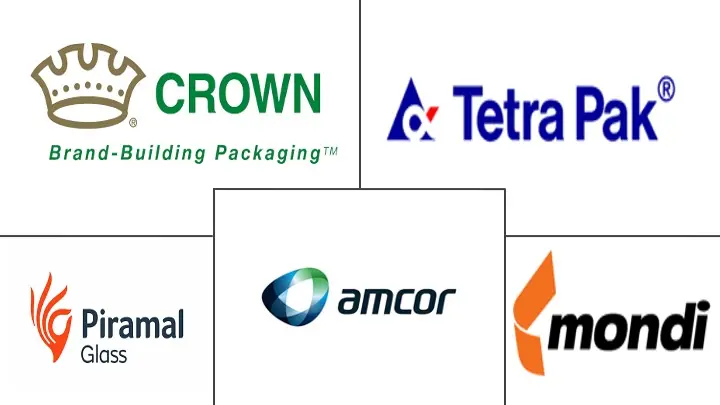Beverage Container Market Size and Share
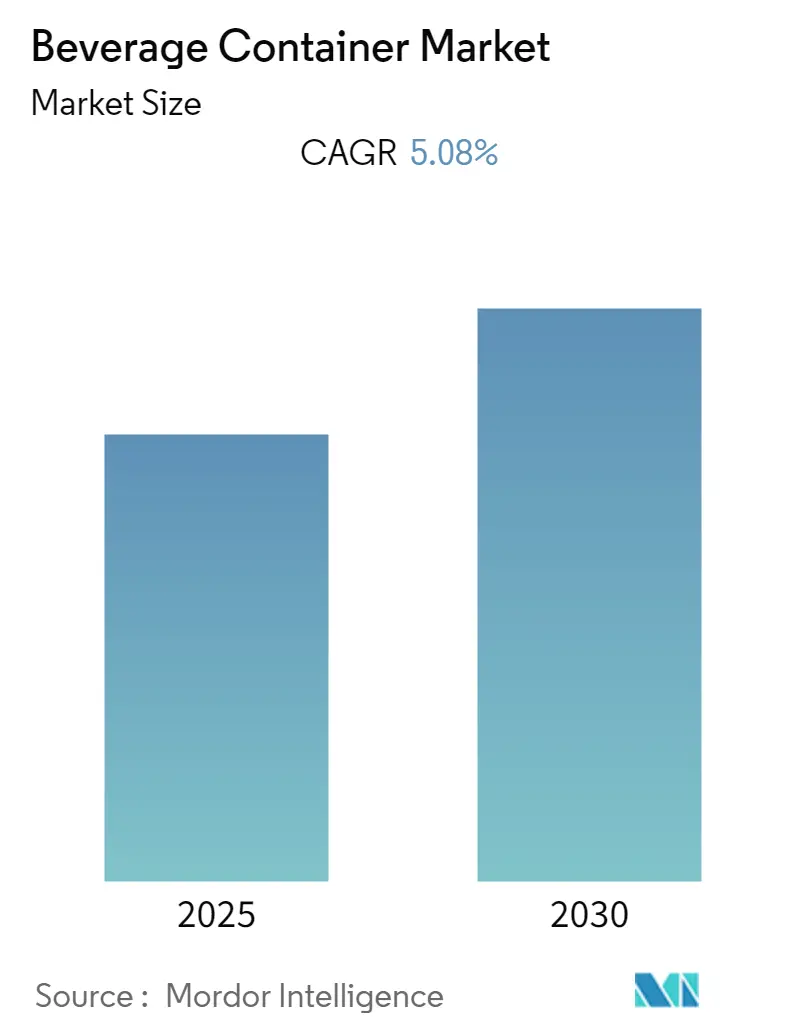
Beverage Container Market Analysis by Mordor Intelligence
The Beverage Container Market is expected to register a CAGR of 5.08% during the forecast period.
- Improvements in technology indicate sustainable growth in the beverage container market. The manufacturers are now able to offer similar strength with reduced thickness, weight, and material used. This enables them to provide better solutions while maintaining a lower cost. The lower price is significant because it operates in very low-profit margins of nearly 8% to 10%. For instance, glass packaging is 100% recyclable, making it a desirable packaging option from the environmental point of view. Six metric tons of recycled glass directly saves six metric tons of resources and reduces the emission of CO2 by one metric ton.
- The rising trend for reusability of beverage bottles and containers is termed as re-commerce. Re- commerce has enabled packaging players to supply their products in glass bottles. This is expected to bolster the adoption of reusable beverage bottles and containers over the forecast period. For instance, in January 2019, the launch of Loop, a durable packaging initiative run by New Jersey-based recycling company, TerraCycle, that debuted at the World Economic Forum, allows the use of steel, glass, and durable plastic reusable packaging for everyday items. The initiative enables the user to order products made by the participating companies, which are delivered in special reusable packaging, with manufacturers redesigning product containers for some of their most popular products.
- One of the significant factors driving the growth of the market is the increase in beer consumption worldwide. Beer is one of the alcoholic beverages that use glass bottles and metal cans for beverage packaging. It is packed in dark-colored glass bottles to preserve the contents, prone to spoilage when exposed to UV light. Also, the demand for various sizes of beer and benefits, like one-time consumption, make beer a preferred option for a wide range of consumers, driving the beverage container industry's growth.
- According to the US Beer Institute Annual Report, 2018, the US beer industry sells more than USD 119.3 billion in beer and malt-based beverages to US consumers each year. Moreover, according to the NBWA industry affairs, 2019, the US consumers who are 21 years and older consumed 26.5 gallons of beer and cider per person during 2018, based upon beer shipment data and the US Census population statistics. Such instances indicate that the glass containers market is poised to grow over the forecast period.
- Since the outbreak of COVID-19, countries are shifting toward single-use plastics. Supply chains are also being strained to meet the surge in demand for single-use plastic packaging. The spread of novel coronavirus did not majorly negatively affect the market, as containers support the vital food, beverage, and pharmaceutical industries that fall under essential services and cannot be discontinued until the pandemic is over.
Global Beverage Container Market Trends and Insights
Plastic Packaging Holds a Significant Market Share
- Recyclability and the ability to be molded into different shapes makes plastic an attractive choice for beverage manufacturers. In addition, the material is also capable of enabling beverage companies to enhance convenience(low weight). Further, eco-friendly initiatives by many beverage companies, are expected to fuel the demand for PET containers over the next four years.
- The growing consumer preference for a recyclable plastic bottle is also forcing vendors to innovate new products in the market. For instance, in October 2019, Coca-Cola introduced a new plastic bottle made of plastic from the sea. About 300 sample bottles were produced using 25% recycled marine plastic retrieved from the Mediterranean Sea and beaches.
- The food and beverage industry is one of the biggest consumers of plastic. In the beverage industry, the adoption of recyclable PET (rPET) witnessed a tremendous increase, owing to the sustainable packaging policies of US-based beverage majors, such as Coca Cola and PepsiCo. For instance, in 2018, Nestle rolled out its first 100% rPET (recycled polyethylene terephthalate) bottle. The company plans to move to 25% rPET bottles by 2021 and 50% rPET packaging by 2025. Moreover, Danone pledged that its Evian brand water bottles would have 100% recycled PET by 2025.
- Plastic remains the most preferred container type for packaging water, besides carbonated drinks and juices. Nestle, a prominent company in the packed water segment, recently pledged to increase its use of recycled plastics, including 25% rPET (recycled PET) in its bottles, across Europe, by 2025.
- Growth in the PET bottled water market is aided by the developing economies of China, India, and Brazil, which have registered an increase in the adoption of bottled water, besides the growth in dominant regions such as the United States and the United Kingdom, among others.
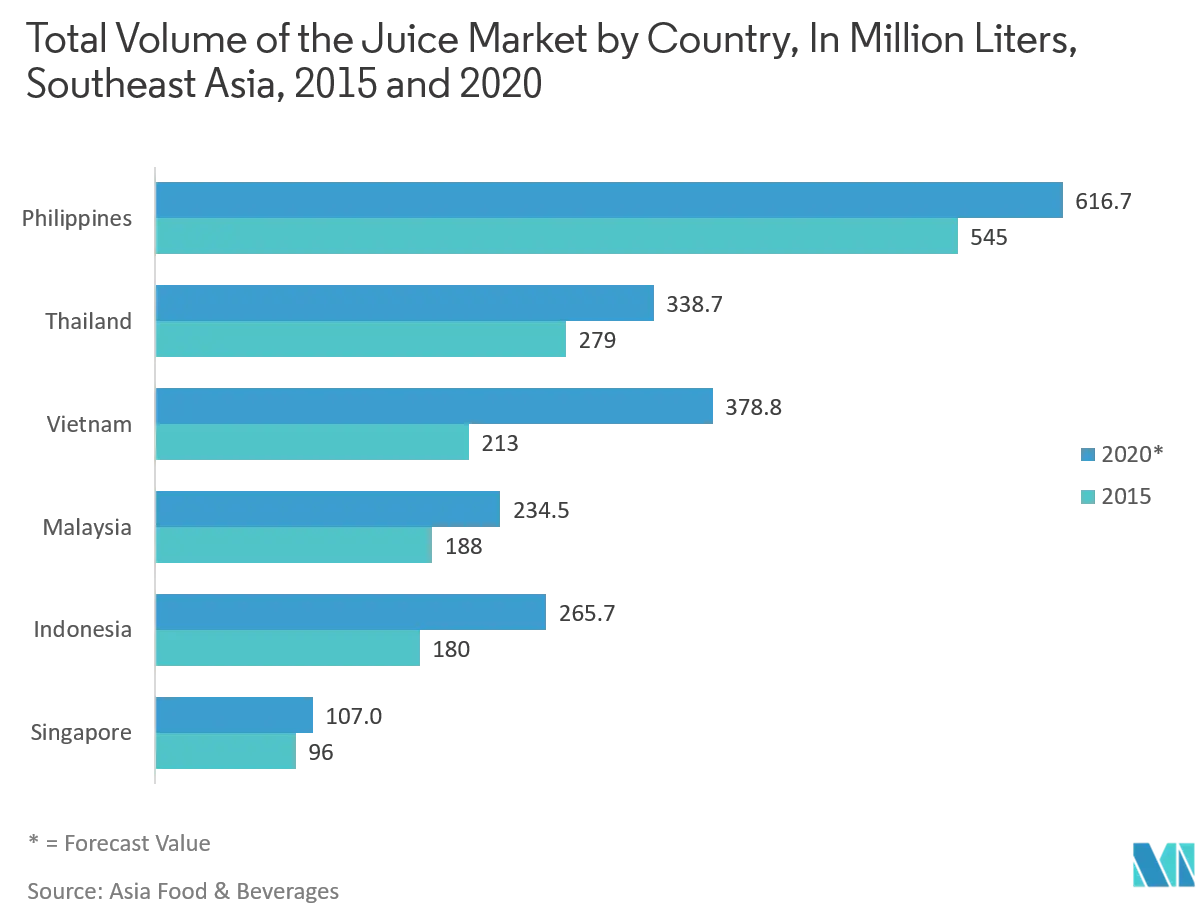
North America to Hold Maximum Market Share
- The packaging is the most critical factor that plays an essential role in the widespread consumption of beverages around the world. The strong demand for sustainable and convenient packaging solutions will drive the demand for beverage containers in North America. According to the Association for Packaging and Processing Technologies (PMMI) 2018 Beverage Report, the North American beverage industry is expected to register a growth of 4.5% during the period 2018-2028.
- Moreover, companies are adopting innovative packaging solutions for beverages to provide shelf appeal and differentiation. A useful package and label highlight the unique selling proposition, showcasing everything that sets the product apart. For instance, in 2019, Australia- based The a2 Milk Company expanded its presence in the United States, with its line of a2 Milk delivered in gable-top cartons from Evergreen Packaging LLC (a US-based company). These cartons use color graphics to differentiate milk varieties. Graphics on the packaging also describe the a2 Milk difference.
- Further, the California government listed a few regulations associated with plastic containers that must be complied with by every manufacturer. Manufacturers must follow at least one of the following regulations: the container must be produced from 25% recycled material at minimum, it should be reusable, have a recycling rate of 45% at minimum, and contain floral preservatives that can be utilized in the floral business at a later stage.
- In the past few years, the United States emphasized recycled glass packaging. According to the US Glass Packaging Institute, the country annually uses more than 3.35 million metric tons of glass packaging. Over 35% of this figure accounted for the production of glass containers in 2018. Within this approach, the country built more than 80 recycling plants for all the recyclable materials.
- With the growing demand for glass bottles and containers in the United States, companies overseas seek to seize the expansion opportunity in the country. For example, in August 2019, Arglass Yamamura LLC from Japan announced an investment of over USD 123 million to build a manufacturing plant in South Georgia. With this strategic move, the company planned to use its latest glass-forming technology.
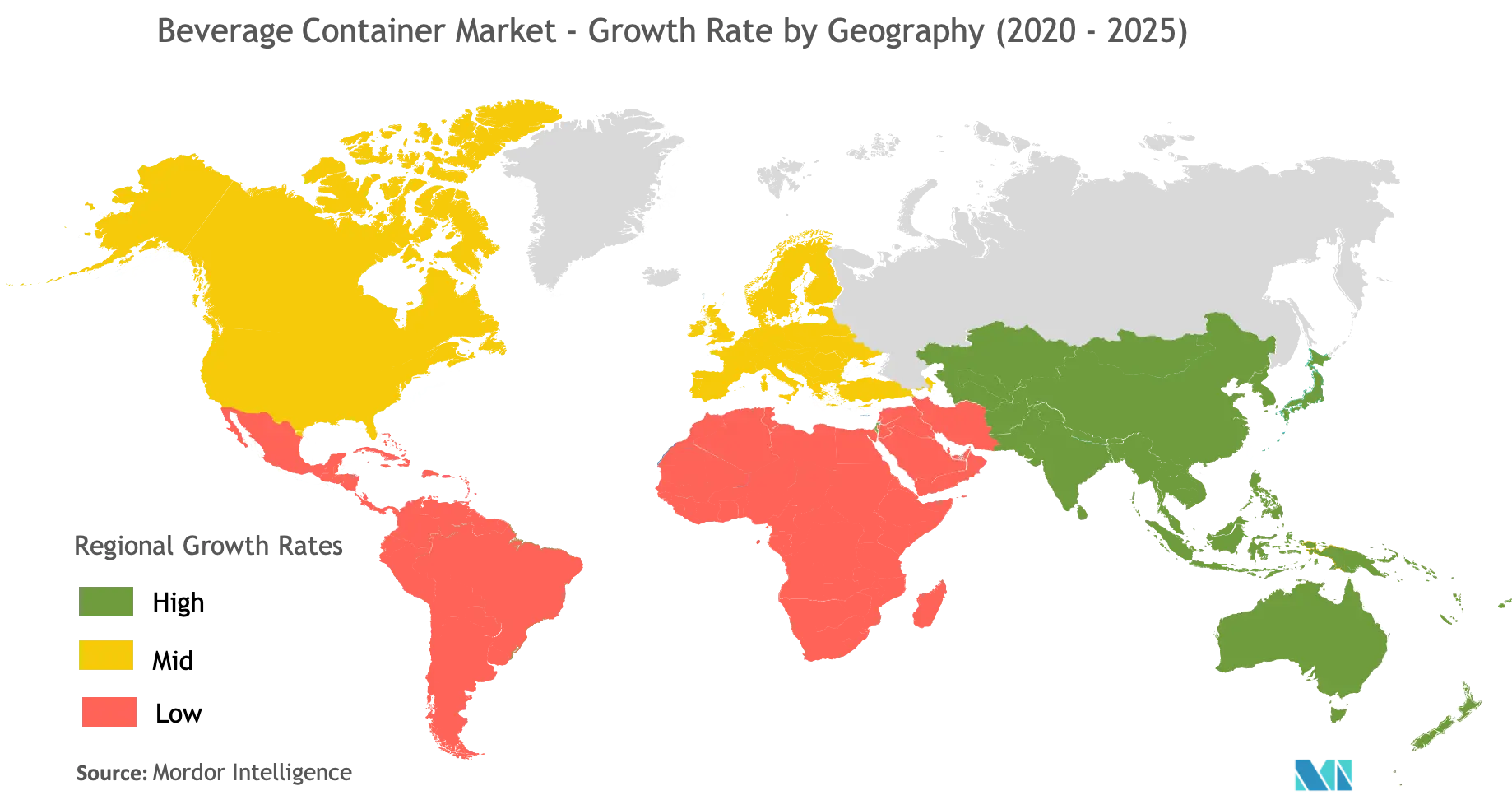
Competitive Landscape
The Beverage Container market is highly competitive, considering the fragmented nature of the market. Therefore, the buyers of the market(beverage companies) have higher bargaining power. With changing consumer and government expectations, buyers are likely to switch packaging suppliers accordingly. Container manufacturers adjust their production capacities and switch to other material containers to keep up with the changing demand. Some of the recent developments in the market are:
- In February 2020 - Amcor announced its latest and custom designs at the Wine and Grape Symposium, North America. The company also announced a collaboration with Garçon Wines, a British start-up. Through this collaboration, Amcor will produce flat wine bottles made with post-consumer recycled (PCR) PET plastic in the United States.
- In January 2020 - Ardagh Group, Glass - North America, a business unit of the Ardagh Group SA and the largest domestic manufacturer of glass bottles for the US wine market, introduced six new sophisticated glass wine bottle designs.
Beverage Container Industry Leaders
-
Amcor Limited
-
Tetra Pak International S.A.
-
Crown Holdings Incorporated
-
Mondi Group
-
Piramal Enterprises
- *Disclaimer: Major Players sorted in no particular order
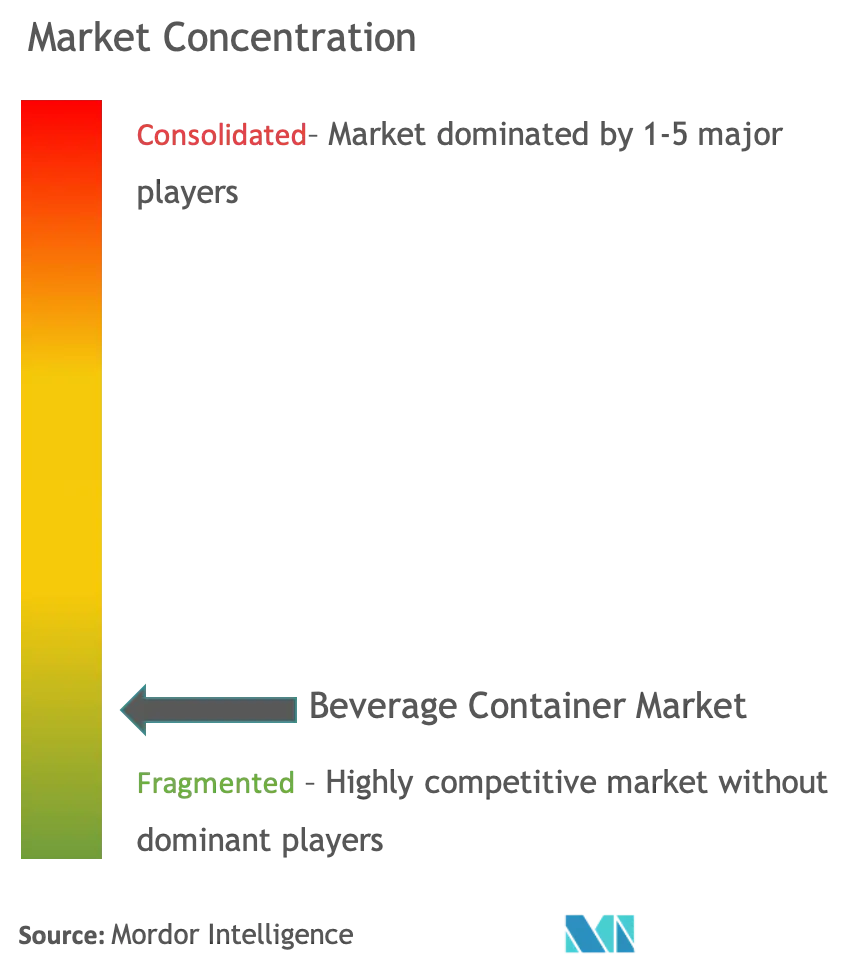
Global Beverage Container Market Report Scope
Containers made of plastic(high-density polyethylene (HDPE) polymer, polyethylene terephthalate (PET) polymers), glass, metal(alumimium, steel) and paperboard(multilayer / aseptic) that are used to protect beverage from contamination are considered in the scope.
| Plastic | Water |
| Carbonated Soft Drinks | |
| Fruit Beverages | |
| Milk | |
| Other Non-alcoholic Beverages | |
| Metal | Carbonated Soft Drinks |
| Beer | |
| Fruit Beverages | |
| Ready-to-Drink tea/coffee | |
| Other Non-Alcoholic Beverages | |
| Glass | Beer |
| Wine | |
| Carbonated Soft Drinks | |
| Other Alcoholic Beverages | |
| Other Non-alcoholic Beverages | |
| Paperboard Container | Milk |
| Fruit Beverages | |
| Other Beverages |
| North America |
| Europe |
| Asia-Pacific |
| Latin America |
| Middle East and Africa |
| By Material | Plastic | Water |
| Carbonated Soft Drinks | ||
| Fruit Beverages | ||
| Milk | ||
| Other Non-alcoholic Beverages | ||
| Metal | Carbonated Soft Drinks | |
| Beer | ||
| Fruit Beverages | ||
| Ready-to-Drink tea/coffee | ||
| Other Non-Alcoholic Beverages | ||
| Glass | Beer | |
| Wine | ||
| Carbonated Soft Drinks | ||
| Other Alcoholic Beverages | ||
| Other Non-alcoholic Beverages | ||
| Paperboard Container | Milk | |
| Fruit Beverages | ||
| Other Beverages | ||
| Geography | North America | |
| Europe | ||
| Asia-Pacific | ||
| Latin America | ||
| Middle East and Africa | ||
Key Questions Answered in the Report
What is the current Beverage Container Market size?
The Beverage Container Market is projected to register a CAGR of 5.08% during the forecast period (2025-2030)
Who are the key players in Beverage Container Market?
Amcor Limited, Tetra Pak International S.A., Crown Holdings Incorporated, Mondi Group and Piramal Enterprises are the major companies operating in the Beverage Container Market.
Which is the fastest growing region in Beverage Container Market?
Asia Pacific is estimated to grow at the highest CAGR over the forecast period (2025-2030).
Which region has the biggest share in Beverage Container Market?
In 2025, the North America accounts for the largest market share in Beverage Container Market.
What years does this Beverage Container Market cover?
The report covers the Beverage Container Market historical market size for years: 2019, 2020, 2021, 2022, 2023 and 2024. The report also forecasts the Beverage Container Market size for years: 2025, 2026, 2027, 2028, 2029 and 2030.
Page last updated on:
Beverage Container Market Report
Statistics for the 2025 Beverage Container market share, size and revenue growth rate, created by Mordor Intelligence™ Industry Reports. Beverage Container analysis includes a market forecast outlook for 2025 to 2030 and historical overview. Get a sample of this industry analysis as a free report PDF download.
